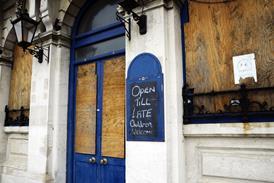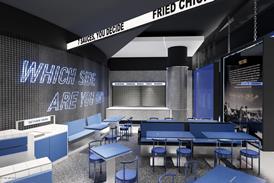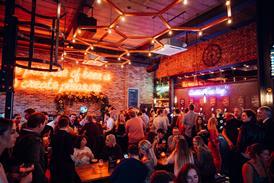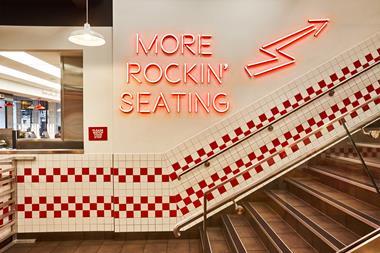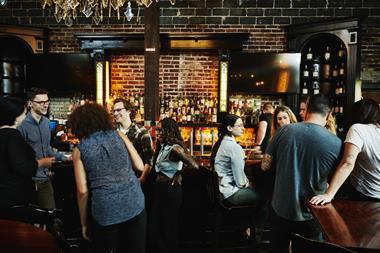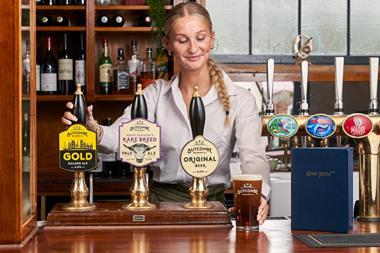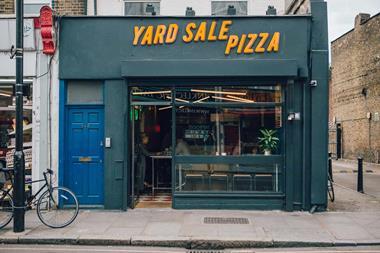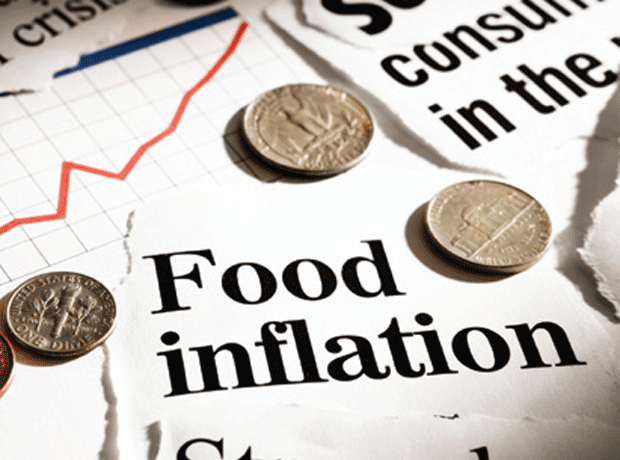The pace of change is speeding up and nowhere is this clearer than in the UK’s eating and drinking-out sector. Over the last five years, AlixPartners and CGA’s Market Growth Monitor has tracked some seismic changes across the industry – from the drinks-led renaissance to the burgeoning impact of delivery. There’s not been a dull moment, say AlixPartners’ Graeme Smith and Craig Rachel.
The findings from the latest edition of the Market Growth Monitor included two watershed moments for the UK’s eating and drinking-out market. One was that, after years of continuous growth, the ‘gold rush’ in terms of restaurant expansion was emphatically over. The flipside was that – at the same time – the long-term shake out of overcapacity in the pub sector may be nearing an end. If you had put those two statements to anyone with a passing interest in the sector five years ago, you may well have got a strange look. However, over the period, this has been the direction of travel.
The long-term story for the restaurant sector has been one of significant growth, with absolute numbers in the UK rising by almost 5,000 from December 2010, to a high of almost 27,500 units by December 2015. Driven by consumer demand, continued investment and landlords looking at adding F&B units to their developments to drive footfall in order to counteract the retail downturn, restaurants – often fuelled by private equity roll-out capital – increasingly began to populate the high street, leisure and retail parks and shopping schemes. While established brands such as Nando’s, Cote and Pizza Express continued to spread their estates far and wide, many with an eye on subsequent exits for their existing backers, new entrants such as Turtle Bay, Five Guys and Franco Manca provided further impetus.
Closures begin
Fast forward 12 months, and by the end of 2016 the sector was faced with the impact of uncertainty over leaving the EU, rises in business rates and rents, further problems in the retail market and the striking growth of the delivery market. This became a catalyst for a recorrection and a swathe of restructurings and subsequent CVA processes, which saw a number of leading national brands close large parts of their businesses.
The latest edition of Market Growth Monitor, which relates to site numbers as at the end of March, covered the fifth successive quarter of decline for the restaurant sector, and the pace of closures on a rolling 12-month measure has accelerated – from two a week at March 2018 to 15 a week now. Britain had a total of 5,785 managed restaurants – 1.1% fewer than at March 2018, and equivalent to nearly six net closures a month. It is worth reiterating that in the longer term, managed restaurants – those branded operators that run multiple venues – have seen huge growth as they are typically taking up new capacity in new developments, but they have also taken over sites previously occupied by independents. Their numbers have increased by more than a quarter in the last five years – or by an average of nearly five a week – but it is becoming clear that those boom years are over.
It is of little surprise to find that high streets are bearing the brunt of closures. Restaurants here fell by 2.4% in the 12 months to March 2019, in sharp contrast to net openings of 1.8% in suburban areas. The Italian sector has been hardest hit: net restaurant numbers have tumbled by 84 in the last 12 months (not including the closures
following the administration of Jamie’s Italian), after a spate of closures and restructuring processes, including Prezzo, Carluccio’s and the Jamie’s Italian CVA. Of course, all this does have positive aspects. As restaurants close, capacity eases and there is more room for surviving operators to breathe. And when restaurants shut, they are often taken on by ambitious smaller brands in particular – and frequently on better terms as landlords have been willing to strike deals to avoid vacant units. This is enabling well-performing operators to continue to expand – in fact a number of concepts have held back on planned M&A activity to take advantage of the buyer-friendly property environment to accelerate EBITDA growth ahead of any planned transaction.
But these latest figures are a reminder that this segment is a survival of the fittest, and that brands need to have a better-quality offer and a closer understanding of their consumers than ever before.
Whilst the casual dining market experiences its own challenging period and oversupply issues, its wet-led pub and bar counterpart has experienced a renaissance of late.
Wet-led renaissance
Three years ago, the Market Growth Monitor reported that the total number of pubs and bars was tumbling at an average of 28 per week. Now, though, the rate has nearly halved, to an average of 15. The trend is even starker on the drinks-led side of the pub and bar sector, where net closures have eased from 31 a week three years ago, to 13 a week in the 12 months to March 2019.
This may signal a move towards the end of the shake out of overcapacity of wet-led or community pubs, but has also been helped in no small part by the continued interest in ‘craft’ and increasing numbers of consumers choosing better quality drinks when they go out, resulting in a surge in sales of premium beers and spirits.
In sharp contrast, food-led pubs were in growth just three years ago (in part due to the large pubcos converting some of their wet-led estate into pub-restaurants), but their numbers are in slight decline now (-0.6% over the last 12 months). This highlights the vital importance of operators striking the right balance between food and drink, and that simply adding food is not enough to guarantee success.
Many of those brands driving the pub and bar market have tapped into the need to offer guests a premium experience. The likes of The Botanist, The Alchemist and Arc Inspirations also share an ability to morph their offer to suit different times of day, and to provide a unique experience that is difficult to replicate. These operators and others have embraced innovation; evolving their venues into multi-roomed, multi-levelled venues, featuring immersive, shared experiences.
The experiential focus – recognising that a visit is as much about the environment and theatre as about the drinks – has been another important success factor for pubs and bars. Changing consumer behaviour – the desire for collective, engaging experiences enhanced by new technology – has driven a rise in competitive socialising. The value of experiential consumerism has grown across the sector over the last few years, with food and drink outlets having to offer much more of an event to guests than ever before. This has also led to the rise of food halls and markets, such as Dinerama and Market Halls, but also to the reimagination of traditional games such as bingo, darts and crazy golf. As the larger operators leave the high street, there will be further opportunities for this style of ambitious operator, for example Puttshack, Flight Club and Swingers, to expand.
High street woes
Drilling deeper into the Market Growth Monitor data, we see that the rate of closures is not uniform around Britain. The number of managed restaurants has fallen in the areas where their density is highest: by 2.8% in southern England and by 1.3% in London. The rates of decline in northern England (0.4%) and the central/Wales region (0.5%) are markedly slower, most probably because saturation in towns and cities here has not been quite so apparent. Scotland, meanwhile, has actually added to its number of managed restaurants over the last 12 months.
In just about every issue of Market Growth Monitor to date, high streets have outperformed suburban areas for new openings, often substantially so. But this is another narrative turning on its head in today’s complex market. In the year to March, British high streets lost 2.4% of their licensed premises – an average of 19 closures a week. This rate outpaced closures in suburban areas (2.3%) and rural areas (2.1%) and the trend has potentially major implications for town and city centres. Big city centres have been magnets for restaurant, pub and bar openings in recent years, but saturation point has been reached in some of them. City centres in the likes of Glasgow, Liverpool, Newcastle and York have all seen a fall in their number of licensed premises in the last year, after years of steady growth. Even London, where outlets have increased by 10.1% in the last five years, has struggled to keep numbers flat over the last 12 months.
What makes one city or town centre flourish and another struggle? There are financial considerations like rents and rates, and levels of local investment that make a big difference. Beneath the headline figures lie many complex and varied narratives – of some towns and city centres with thriving restaurant, pub and bar scenes, and of others that are fading fast.
In particular, some towns and cities have experienced a shift of the ‘circuit’ from one area to another, which has dramatically impacted footfall and sales performance in specific streets and areas. This has made previously profitable site locations unviable, leading to inevitable closures if the footfall decline is terminal.
Tale of two towns
The most recent edition of the Market Growth Monitor focused on two locations, Stockport and Northampton, to illustrate that point. At March 2019, Stockport had a total of 409 licensed premises – 10 more than 12 months earlier. Northampton has more premises at 477 – but that number has fallen by 12 in a year. The town’s figures are part of a wider malaise that makes it symbolic of Britain’s high street crisis. Several major department stores have closed in recent years, and a third of the units on the main thoroughfare are now vacant. Competition from online retailers and a nearby shopping and leisure park have sucked footfall away. By contrast, in Stockport, hospitality operators have updated people’s perceptions of what is available in the town, and a just-opened food and drink hall is likely to continue the rejuvenation. The big challenge for every expanding business is having a proper grasp of hyper-local factors and consumer types if they want their new openings strategies to succeed and lead to sustainable operations.
While in the short term we believe the market will unfortunately witness more site closures, the best operators have grounds for optimism. With demand levels remaining robust, delivery being used more effectively to drive incremental sales and high-footfall locations such as travel hubs proving successful new hunting grounds, the outlook is more positive. Now that time has been called on the casual dining space race and retailers are reducing their store numbers, the next 12 to 24 months offer an opportunity for well-funded groups to expand into prime sites at much reduced costs. This can only be good for returns on capital that had come under pressure during the restaurant expansion boom.
■ Graeme Smith is a Managing Director and Craig Rachel a Senior Vice President, both specialising in corporate finance at AlixPartners
Precis

